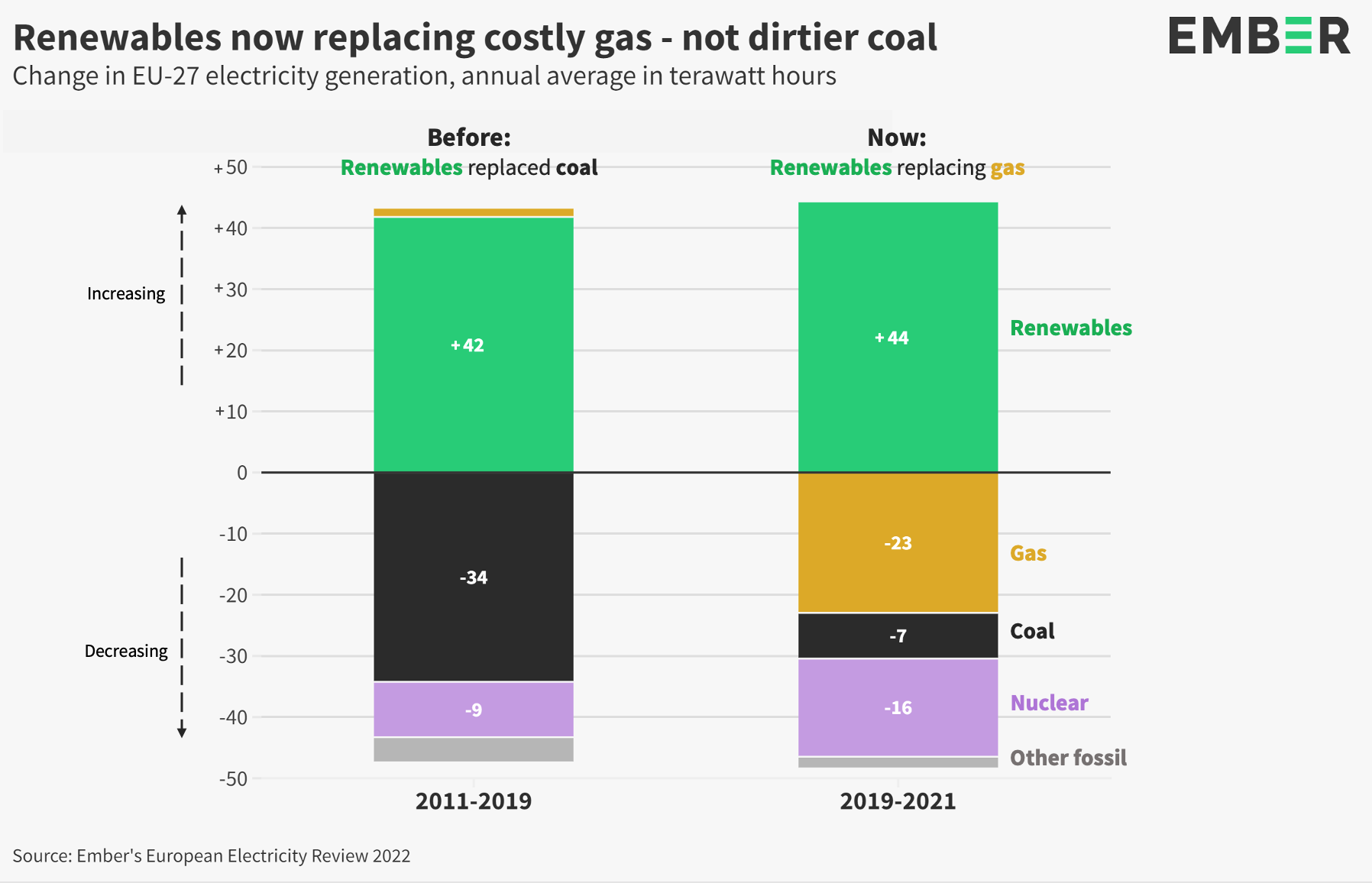About
The European Electricity Review analyses full-year electricity generation data for 2021 in all EU-27 countries to understand the region’s progress in transitioning from fossil fuels to clean electricity. It is the sixth annual report on the EU power sector published by Ember (previously as Sandbag).
The report compares electricity generation in 2021 to benchmark pre-pandemic levels in 2019, providing the first insight into how the gas crisis is affecting the region’s power sector after its recovery from the pandemic.
The report compares electricity data from 2021 to both 2020 and 2019. The comparison to 2019 is a far more accurate measure of the EU’s overall progress in the transition from coal to clean electricity, than the year-on-year headline figures, which have swung down and then back up again because of the Covid-19 pandemic.









